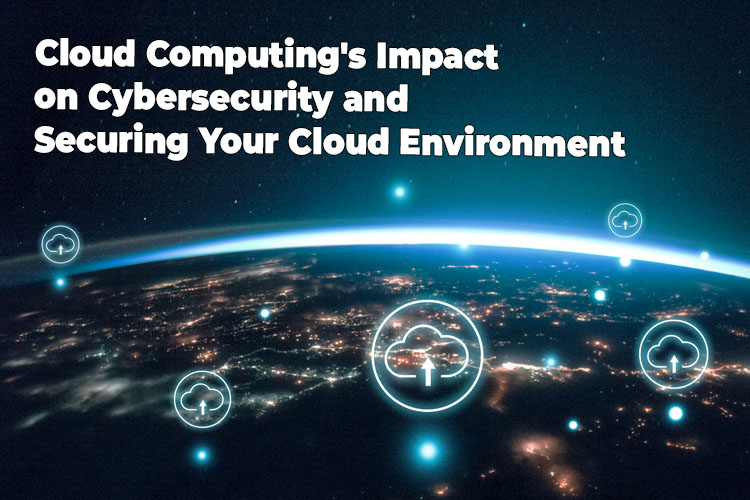Cloud computing has become an essential technology for businesses, offering benefits such as scalability, cost savings, and flexibility. However, as organizations adopt cloud computing, they must also consider the impact on their cybersecurity. The cloud environment introduces new security challenges and risks that must be addressed to ensure the security of sensitive information and systems.
The Impact of Cloud Computing on Cybersecurity:
Increased attack surface: The cloud environment increases the attack surface for cyber criminals, as sensitive information and systems are stored in the cloud. Cyber criminals can access this information through unauthorized access, exploitation of vulnerabilities, and other means.
Shared responsibility: When organizations adopt cloud computing, they are sharing responsibility for the security of their information and systems with the cloud provider. This means that organizations must be aware of the security controls that the cloud provider has in place and understand their responsibilities for securing their own systems and data.
Lack of visibility: In the cloud environment, organizations may have limited visibility into the security of their information and systems. This can make it difficult to detect security incidents and respond to them effectively.

Best Practices for Securing Your Cloud Environment:
Adopt a multi-layer security approach: A multi-layer security approach is essential for securing your cloud environment. This includes using encryption, access controls, and other security measures to protect sensitive information and systems.
Know your cloud provider’s security controls: Understand the security controls that your cloud provider has in place and evaluate whether they meet your security requirements. Consider using a third-party security assessment service to assess the security of your cloud environment.
Implement access controls: Implement strong access controls to ensure that only authorized users have access to sensitive information and systems in the cloud. This includes using multi-factor authentication and implementing role-based access controls.
Monitor and log activity: Continuously monitor and log activity in your cloud environment to detect security incidents and respond to them promptly. Use tools such as intrusion detection systems and log analysis to detect and respond to security incidents.
Regularly review and update: Regularly review and update your security controls and procedures to ensure that they remain effective in protecting your information and systems in the cloud.
In conclusion, the adoption of cloud computing has a significant impact on cybersecurity, and organizations must take steps to secure their cloud environment. By following these best practices, organizations can help ensure the security of their sensitive information and systems in the cloud.
If you’re looking for help in securing your cloud environment, consider partnering with a trusted cybersecurity consultant. Our team of experts has years of experience in helping organizations secure their cloud environments and implement robust cybersecurity strategies. Contact us today to schedule a consultation.

